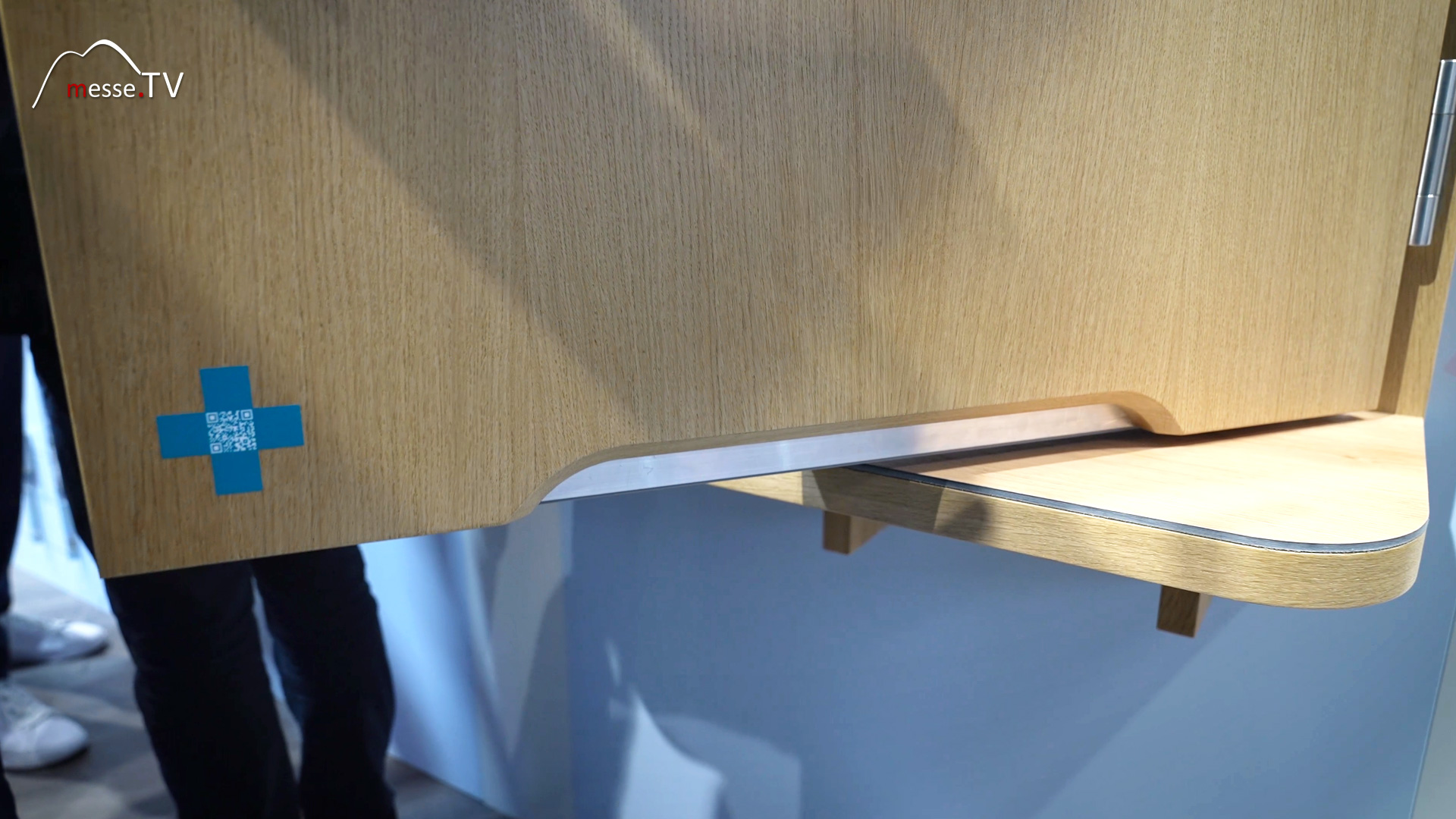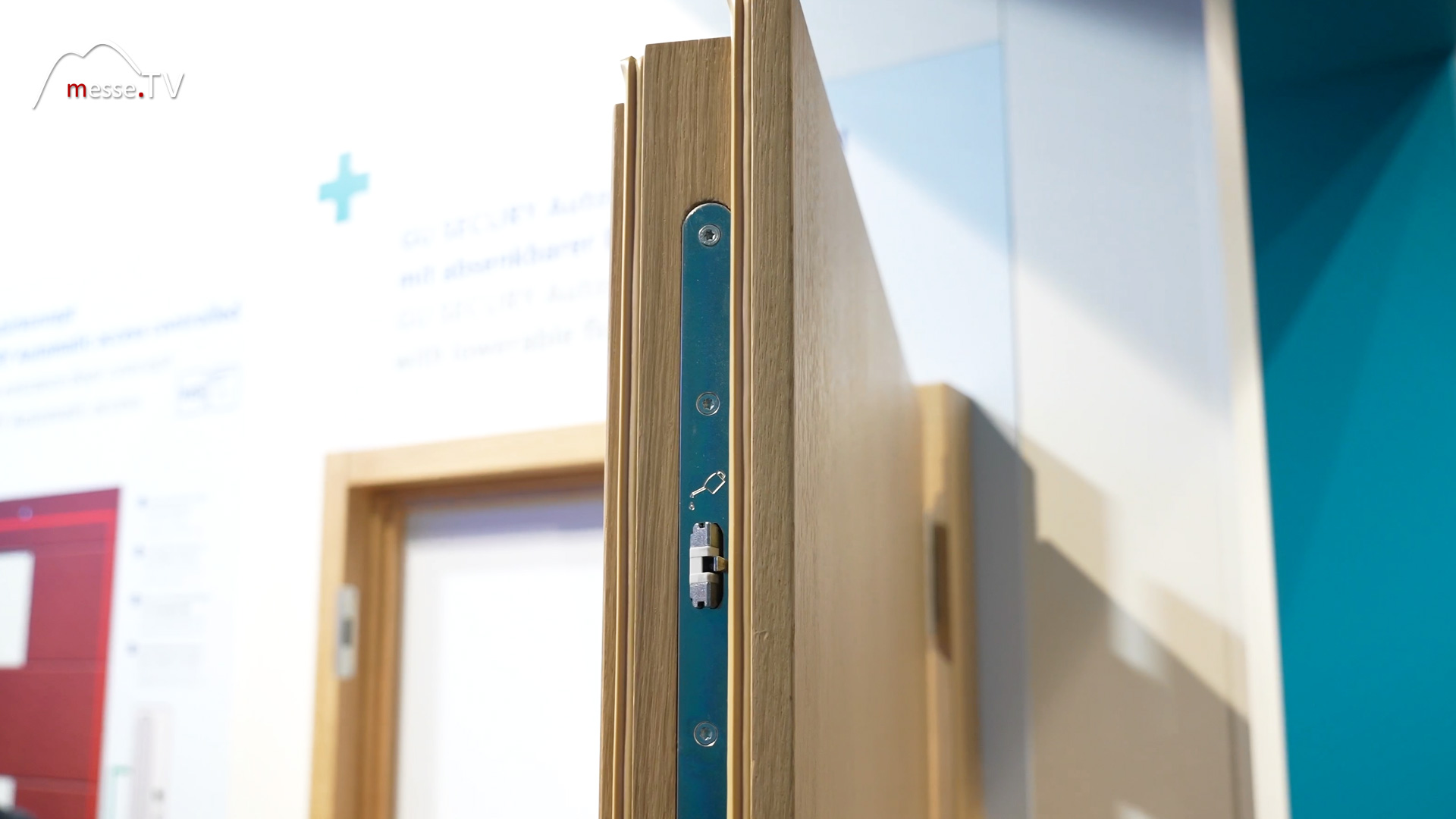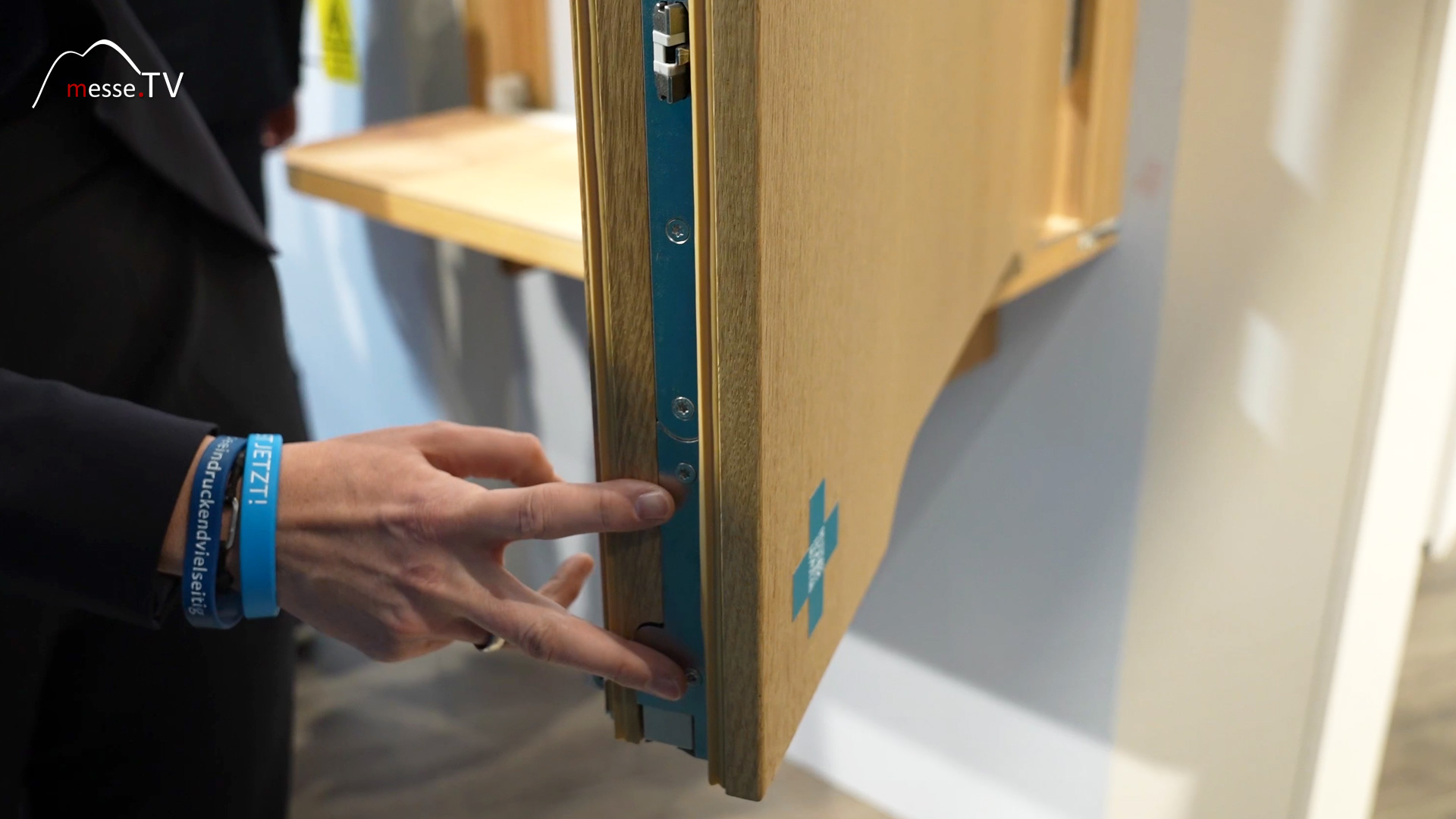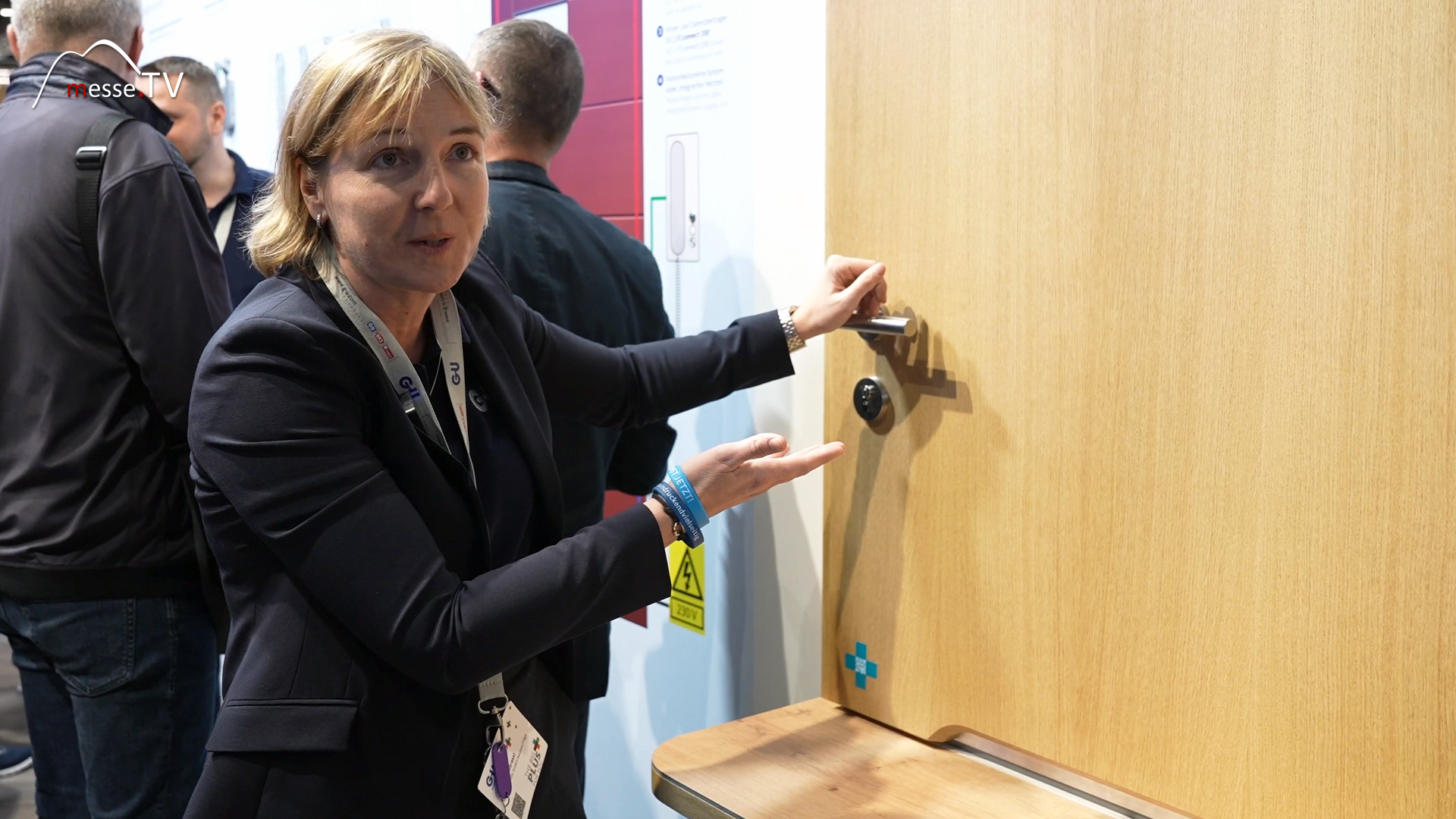Window and door technology - Gretsch Unitas
The owner-managed, medium-sized group of companies Gretsch Unitas with its approx. 3500 employees specializes in fittings, door locks and BKS products. A world first is on the program at Fensterbau Frontale.
A world first from GU: lever-operated lifting of the door seal
This concerns the well-known problem of door seals at the bottom edge. The floor underneath is often affected or the seal pushes the accumulated dirt back and forth. The reason for this is that a new seal only lifts over time. Gretsch Unitas has found a lever-operated solution to remedy this. As soon as the door handle is pressed, the seal lifts upwards. As a result, there are no more drag marks on the floor and the thermal seal and sound insulation are increased. This works with an additional piece underneath the standard lock that operates the push bar. The seal and additional piece are purchased together and are connected to the push rod. Push-buttons, openers or keys trigger the operation.



Gretsch Unitas focuses on the inner workings of the fittings
In 2024, Gretsch Unitas opted for an unusual trade fair concept in the turn/tilt area without a single exhibit. The company's core competence is fittings, so these are in the front row and should also be prominently visible. Customers know how windows are built and what they look like. What the inside of a fitting looks like is of interest. The inner workings can be seen and explained wonderfully by means of wall-mounted fittings without any surrounding elements. This display also features an innovation in the form of an adjustable door catch. This balcony door catch is self-adjusting in height. An advantage if the door has settled over time. With the new balcony door catch, there is no need for readjustment as it adjusts itself in height. In addition, the latching and unlatching force can be adjusted with a small adjusting screw. This means that as soon as the fitting is installed, the customer no longer has any problems.
Current industry trends: accessibility, sustainability and comfort
These 3 main topics are currently relevant for the industry trends: 1. accessibility in view of the ageing society and also for more mobility for people with disabilities in all age groups. 2. sustainability and optimization of production in view of limited resources and reduction of CO2 emissions and 3. the topic of comfort and the question of what can be done to make use and operation as easy as possible for the end customer.







